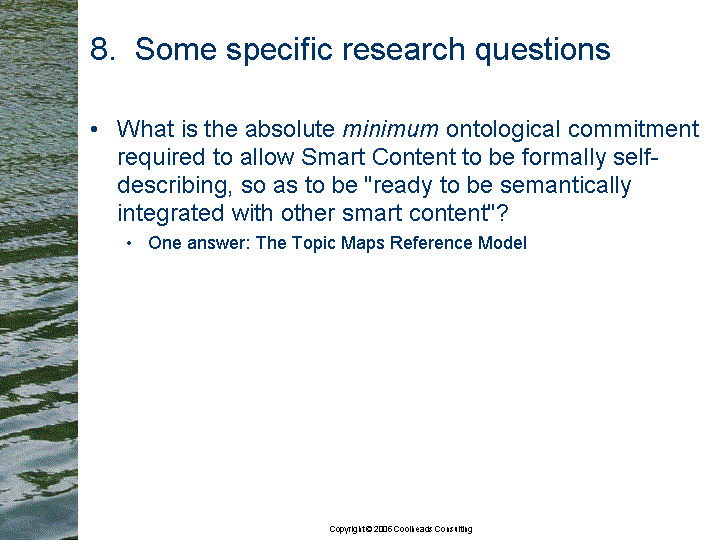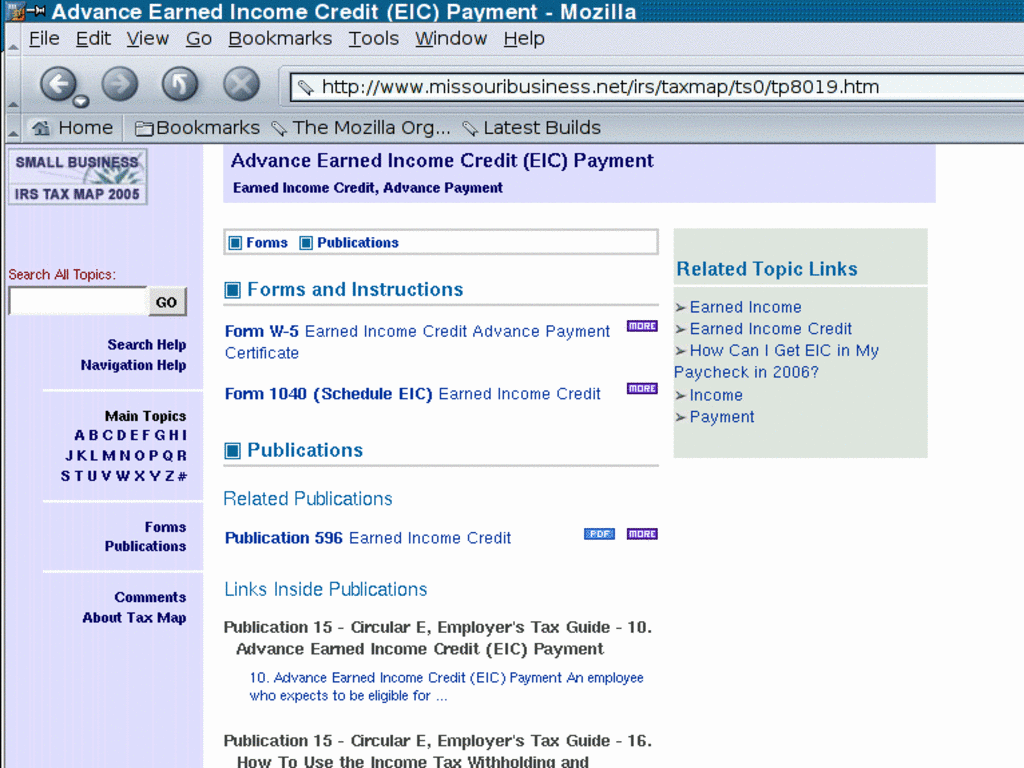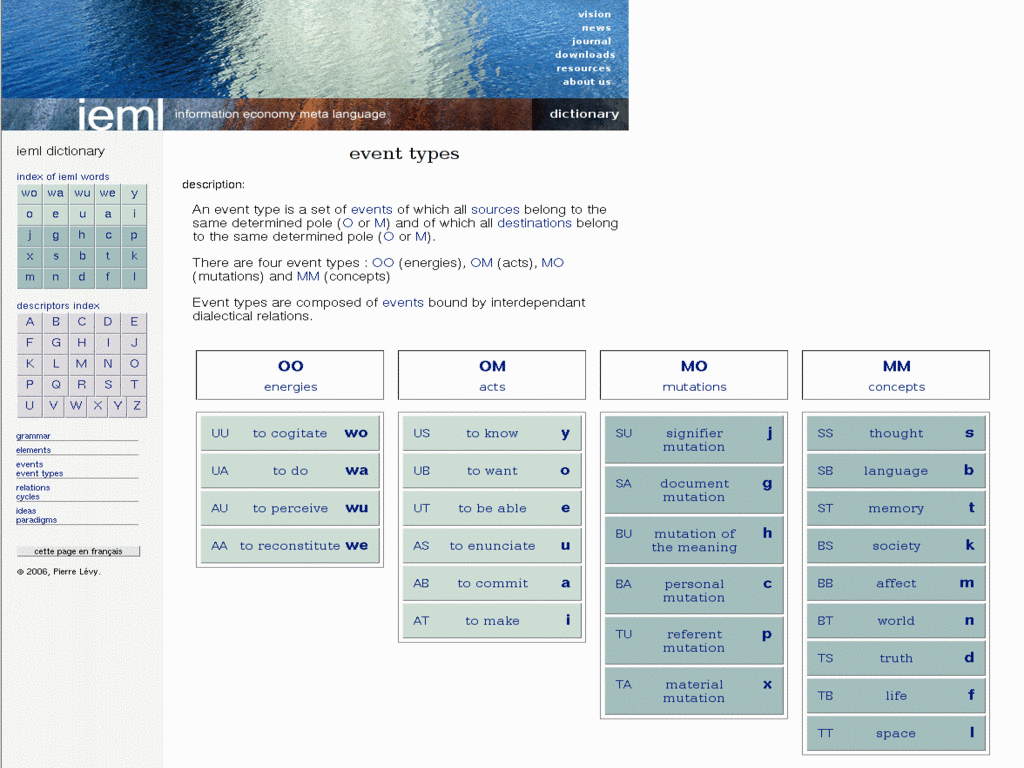
| Previous | SLIDE 20 | Next |
 | ||
Here are two screen shots from Topic Maps projects in which I'm currently involved, and that are publicly available. They are followed by some references to information about other active Topic Maps projects.

IRS telephone assistors use Tax Map to help taxpayers prepare their tax returns. Tax Map brings together -- "semantically integrates" -- all the public information generated by five distinct, ontologically/editorially independent communities within IRS, in such a way that there is a single web page for each distinct subject.
IRS publishes a version of Tax Map in its Publication 1796. This version of Tax Map also appears on the net in various places, including http://www.missouribusiness.net/irs/taxmap/ts0/tp8019.htm. The IRS-internal version is integrated with additional materials, including probe-and-response scripting for conversations with taxpayers.

Having recently attended a sold-out Topic Maps conference, Emnekart Norge (Topic Maps Norway) 2006, 29 March 2006 (program), run by the venerable Norwegian Computer Society, I'm convinced that there's quite a lot of new stuff going on, at least some of it not at all toy-like. There were new applications in municipal government (Stuttgart, DE), national government (Norwegian Directorate for Education and Training, Dutch Tax Administration, the U.S. Navy's Office of Naval Intelligence, the Danish Royal Library, etc. These newer projects are added to older, well-established non-toy applications at the U.S. Internal Revenue Service ("Tax Map"), at the U.S. Department of Energy classification of nuclear weapons secrets, and elsewhere. Steve Pepper's closing keynote in Oslo was an illuminating wrap-up.
The Oslo event was the fourth "Emnekart" conference, and there is another, perhaps more research-oriented October annual conference dedicated to Topic Mapping in Leipzig, Topic Maps Research and Applications (TMRA). In addition, many participants in the August Extreme Markup Languages Conference in Montréal have been providing leadership to the field since 1994. Topic Maps have had a slow, quiet start, but there is every reason to believe that, if the Topic Maps paradigm hasn't already crossed the chasm, it is certainly more than halfway across, and it is moving toward ubiquity with increasing speed.